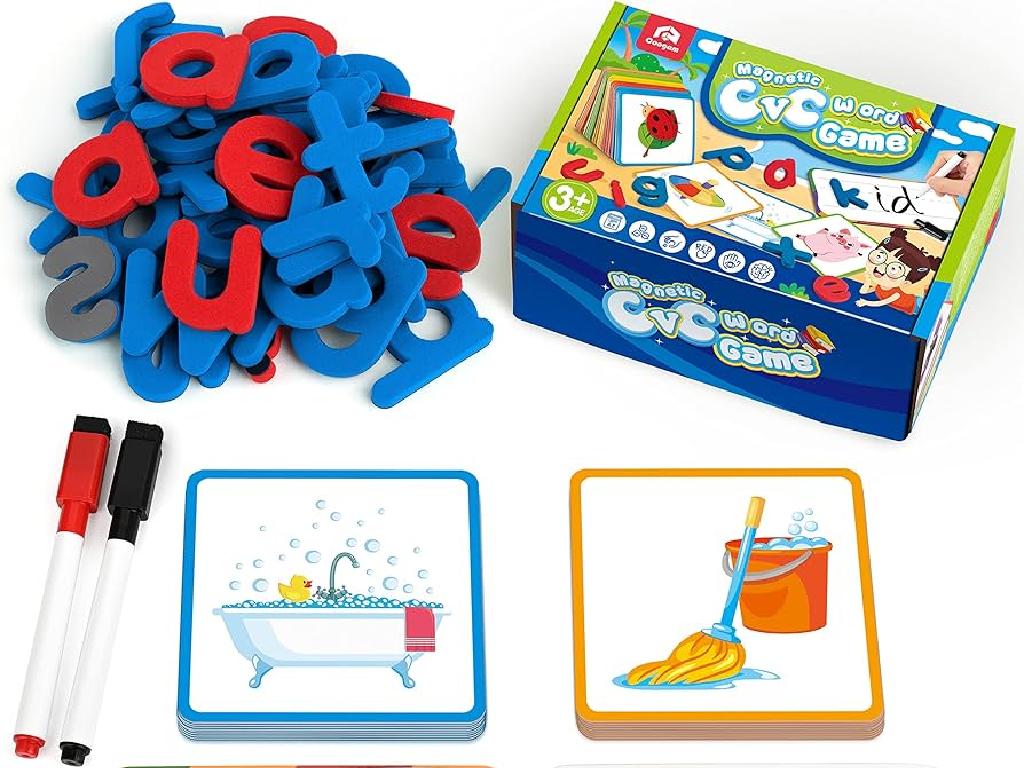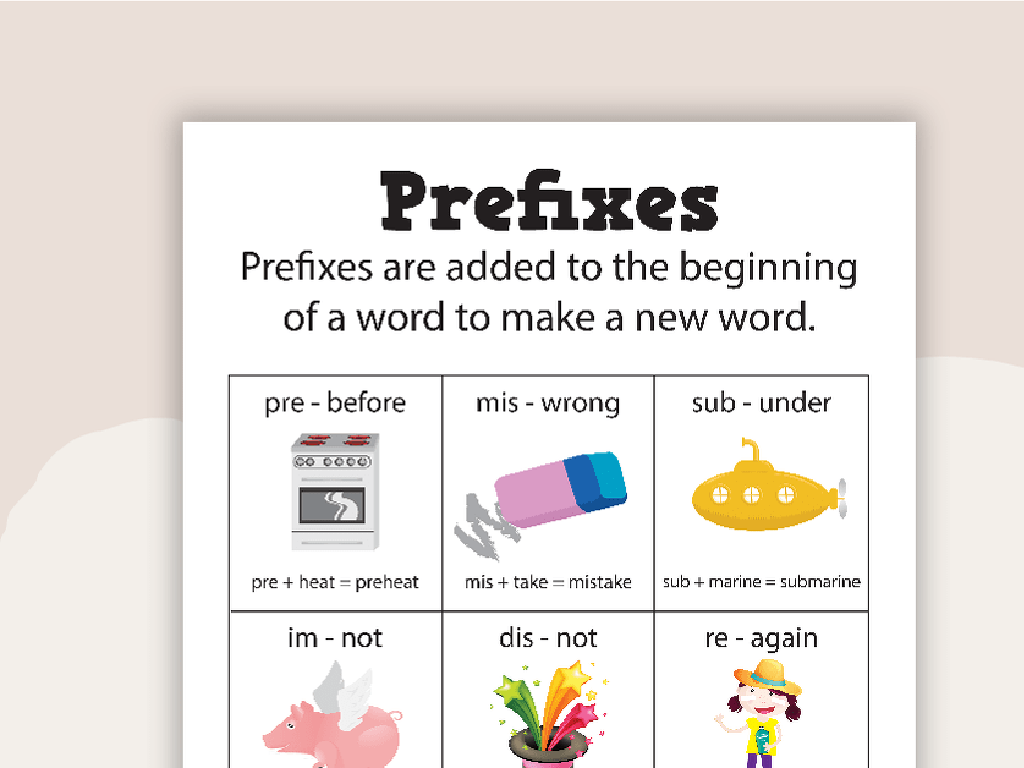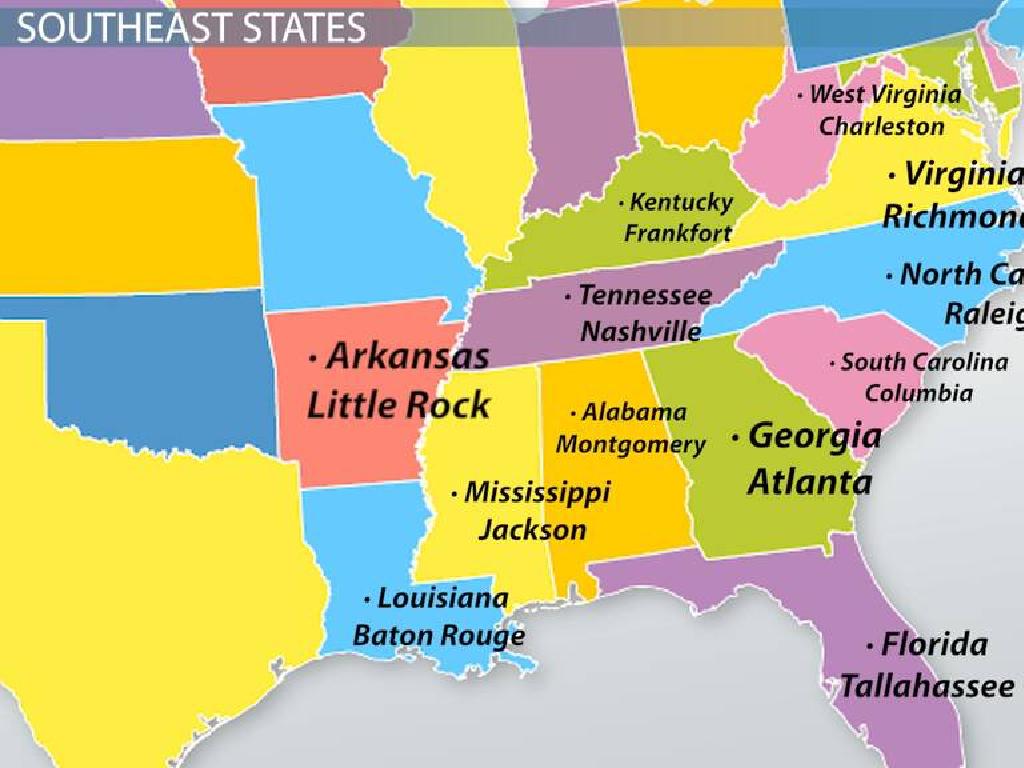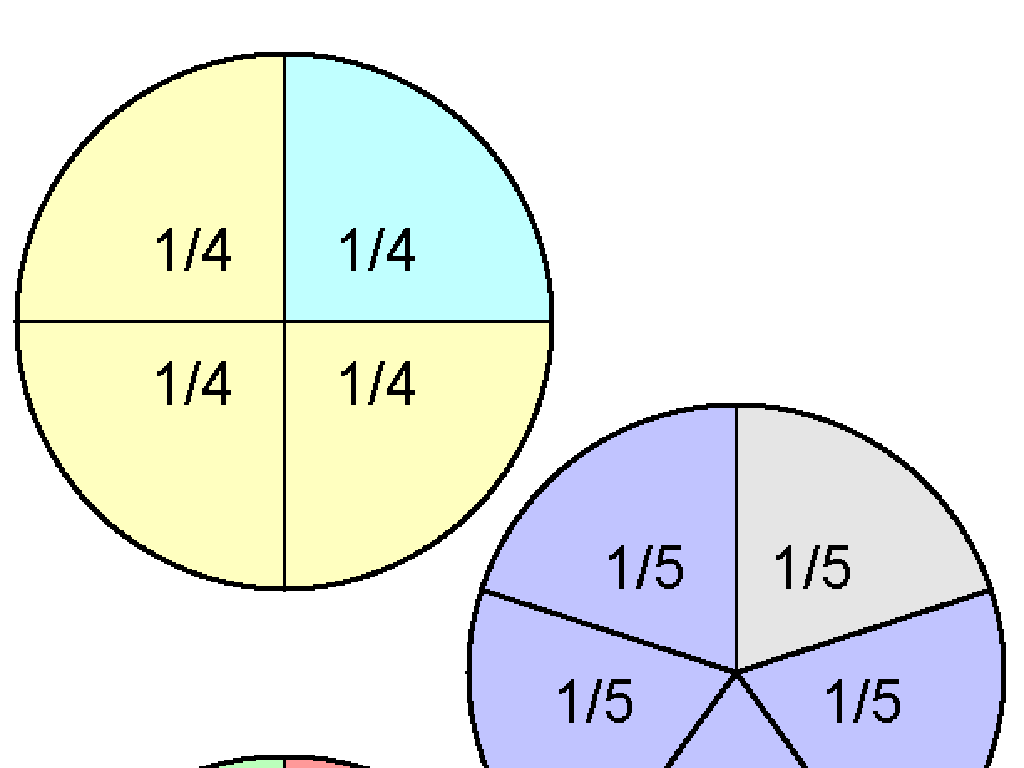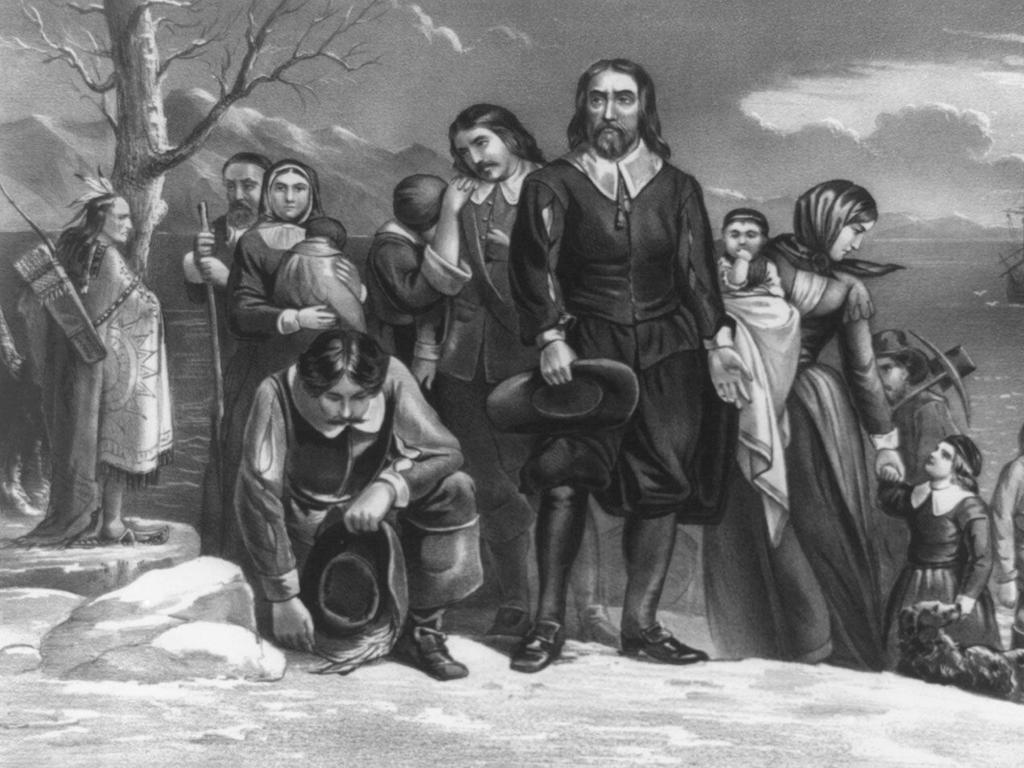Parts Of Three-Dimensional Figures
Subject: Math
Grade: Eighth grade
Topic: Three-Dimensional Figures
Please LOG IN to download the presentation. Access is available to registered users only.
View More Content
Exploring 3D Figures in Our World
– Understanding 3D dimensions
– 3D means having length, width, and height
– Defining 3D figures
– Objects with depth, like cubes or spheres
– Daily life 3D figure examples
– Think of balls, boxes, and cans you use every day
– Recognizing 3D shapes around us
– Observe and name 3D shapes in the classroom
|
This slide introduces students to the concept of three-dimensional figures, emphasizing the three aspects of length, width, and height that define 3D space. Provide clear definitions and encourage students to visualize and touch objects to understand their 3D nature. Use everyday examples to make the concept relatable, such as balls representing spheres, boxes for cubes, and cans for cylinders. Prompt students to look around their environment, both in the classroom and at home, to identify 3D figures, reinforcing their understanding of the shapes and their properties.
Defining 3D Figures in Math
– Characteristics of 3D shapes
– 3D shapes have depth, width, and height
– Comparing 2D and 3D shapes
– 2D shapes are flat, 3D shapes have volume
– Identifying faces, edges, vertices
– Faces are flat surfaces, edges are lines where faces meet, vertices are corners
– Understanding shape properties
|
This slide introduces students to the concept of three-dimensional figures in geometry. Start by explaining that unlike 2D shapes, 3D shapes have depth in addition to width and height, which gives them volume. Highlight the differences between 2D and 3D shapes, ensuring students understand that 2D shapes are flat with only two dimensions, while 3D shapes are solid objects. Discuss the components of 3D shapes: faces (flat surfaces), edges (the lines where two faces meet), and vertices (corners where edges meet). Use examples like cubes, spheres, and pyramids to illustrate these concepts. Encourage students to handle 3D objects and identify these parts to solidify their understanding.
Faces of 3D Figures
– Define a 3D figure face
– A face is a flat surface on a 3D shape, like a cube has 6 faces.
– Count faces on 3D shapes
– Practice counting faces on cubes, pyramids, etc.
– Classroom objects face activity
– Find and count faces on items like boxes, balls.
– Understanding faces in daily life
|
Begin with a definition of what constitutes a face on a three-dimensional figure, emphasizing its flat nature. Move on to counting the faces of various 3D shapes, such as cubes, spheres, and pyramids, to help students familiarize themselves with different types of figures. For the activity, have students identify and count the faces on common classroom objects, such as a tissue box or a soccer ball, to reinforce their understanding. This will help them connect the concept to real-world objects they interact with daily. Provide guidance on how to distinguish between curved surfaces and flat faces. Encourage students to discuss how many faces they find on different objects and why some objects have more faces than others.
Exploring Edges of 3D Figures
– What are edges in 3D geometry?
– Edges are the lines where two faces of a 3D shape meet.
– Tips for counting edges accurately
– Count each line where two faces connect without repeating.
– Class activity: Building 3D figures with straws
– Use straws to construct the edges of various 3D shapes.
|
This slide introduces the concept of edges in three-dimensional geometry, which are the line segments formed where two faces of a solid figure meet. Emphasize the importance of visualizing these edges as the ‘skeleton’ of the figure. Provide clear instructions on how to count edges without double-counting. For the activity, prepare straws and connectors for students to build models of 3D figures, such as cubes, pyramids, and prisms. This hands-on activity will help solidify their understanding of edges in a tangible way. Offer guidance and support as students work on constructing their figures, and encourage them to count the edges of their models to verify their understanding.
Vertices of 3D Figures
– Define vertices in 3D context
– Points where edges meet, e.g., cube corners
– Understand vertices’ role
– They determine the shape’s form and structure
– Class activity: Mark vertices
– Use sticky dots to identify vertices on 3D models
– Discuss activity findings
|
This slide introduces the concept of vertices in three-dimensional figures. A vertex is a point where two or more edges meet; it’s a crucial part of a 3D figure’s structure. Understanding vertices helps students grasp the form and stability of 3D shapes. The class activity involves students marking the vertices on various 3D models using sticky dots. This hands-on approach solidifies their understanding of vertices and how they contribute to the shape’s integrity. After the activity, encourage students to share their observations and discuss how the number and arrangement of vertices affect the figure’s properties. Provide several models like cubes, pyramids, and prisms for a diverse experience.
Exploring Nets in 3D Geometry
– Define a 3D Geometry Net
– A net is a 2D shape that can be folded to form a 3D figure
– Building shapes from nets
– Visualize how 2D patterns transform into 3D structures
– Activity: Crafting 3D figure nets
– Use paper to create nets for cubes, pyramids, etc.
|
Introduce the concept of a net as a two-dimensional pattern that, when properly folded, forms a three-dimensional figure. Explain how nets help us understand and visualize the construction of 3D shapes. For the activity, provide students with templates of nets for various 3D figures such as cubes, pyramids, and cylinders. Encourage them to cut out the nets and fold them to create the corresponding 3D shapes. This hands-on activity will aid in their spatial understanding of how 2D shapes can form 3D figures. Ensure to have examples of nets for different 3D shapes and guide students on how to fold them correctly. Discuss the importance of accurately transferring the net to the 3D shape for practical applications in fields like engineering and design.
Surface Area and Volume of 3D Figures
– Exploring Surface Area
– Surface area is the total area of all faces of a 3D figure.
– Grasping the Concept of Volume
– Volume measures the space a 3D figure occupies.
– Formulas for Surface Area
– Use specific formulas for different shapes, e.g., SA of a cube: 6a^2.
– Formulas for Volume
– Volume formulas vary, e.g., V of a cube: a^3.
|
Begin with an introduction to surface area, explaining that it’s the sum of the areas of all the faces of a three-dimensional figure. Then, discuss volume as the measure of space inside a 3D figure. Provide students with basic formulas for calculating the surface area and volume of common shapes like cubes and rectangular prisms. Emphasize the importance of understanding the dimensions of the figure and selecting the appropriate formula. Encourage students to memorize these formulas as they are fundamental to solving geometry problems involving three-dimensional figures.
Real-World Applications of 3D Figures
– 3D figures in architecture
– Buildings & structures rely on geometric shapes for strength and aesthetics
– Packaging design uses 3D shapes
– Boxes, bottles, and cans are designed with 3D geometry for practicality
– Design principles with 3D figures
– 3D shapes are fundamental in creating functional and appealing designs
– Discuss 3D shapes in everyday objects
|
This slide aims to show students the practical applications of three-dimensional figures in various fields. In architecture, 3D shapes provide the foundation for designing buildings and structures, combining both strength and aesthetic appeal. Product packaging is another area where these figures are crucial; they help in creating efficient designs for storage and transport, as well as in attracting consumers. Discuss how designers use 3D shapes to optimize function and style in everyday objects. Encourage students to identify 3D shapes around them and consider their role in design and functionality. This will help them appreciate the relevance of geometry in real life.
Class Activity: Building 3D Models
– Apply knowledge of 3D figures
– Use construction paper, scissors, tape
– Create a 3D model
– Build a cube, pyramid, or other 3D shape
– Label all parts of your model
– Identify faces, edges, vertices
|
This hands-on activity is designed to help students apply their understanding of three-dimensional figures by constructing a model using simple materials. Provide students with construction paper, scissors, and tape, and instruct them to create a model of a 3D figure such as a cube, pyramid, or cylinder. Once the model is built, students should label the different parts, including faces, edges, and vertices. This will reinforce their knowledge of 3D shapes’ properties. For the activity, consider these options: 1) Assign different shapes to groups to create a class gallery of 3D figures. 2) Challenge students to create a complex figure using multiple simple shapes. 3) Have students calculate the surface area and volume of their models if appropriate for their skill level. 4) Allow students to present their models to the class, explaining the parts and how they constructed the figure. 5) Encourage creativity in design and decoration to make the activity more engaging.
Review and Q&A: 3D Figures
– Recap of 3D figures lesson
– Ask your questions now
– Homework: 5 labeled 3D objects
– Find objects like cans, balls, boxes, and label faces, edges, vertices.
– Be ready to discuss tomorrow
– We’ll review your findings in class.
|
This slide is meant to conclude the lesson on three-dimensional figures by summarizing the key points and opening up the floor for any student questions. Encourage students to ask about any part of the lesson they found challenging. For homework, students are tasked with finding five everyday objects that are examples of three-dimensional figures and labeling their geometric parts such as faces, edges, and vertices. This will help reinforce their understanding of the lesson content. Be prepared to facilitate a discussion in the next class where students can share and compare the objects they found and their respective labeled parts.

